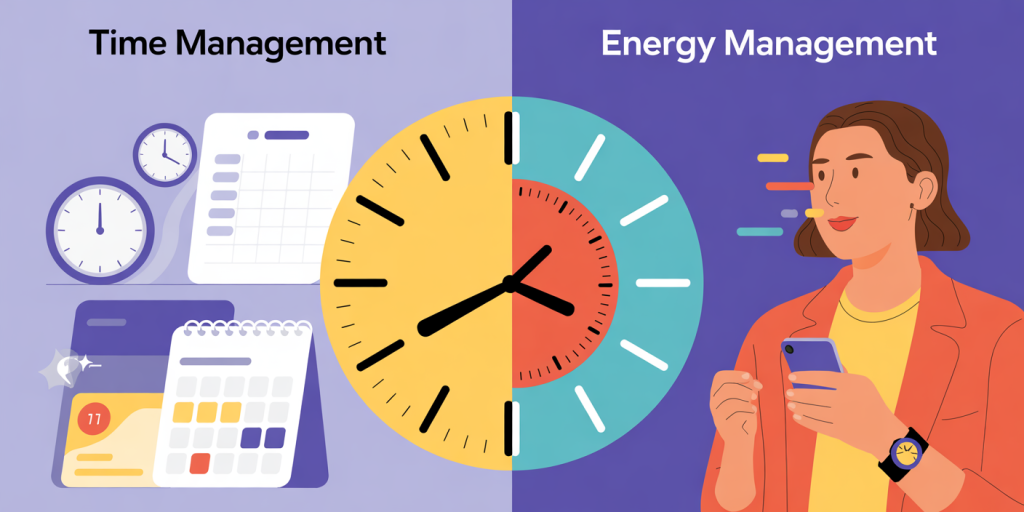In today’s fast-paced society, maximizing productivity remains a prominent goal for individuals and organizations alike. To achieve this, many professionals and productivity experts debate the efficacy of two major approaches: time management and energy management. While time management focuses on organizing and allocating hours in the day, energy management emphasizes optimizing biological and psychological resources to perform tasks effectively. Both strategies have their merits, but which truly results in higher productivity? This article explores the nuances of time and energy management, drawing on research, practical examples, and expert opinions to assess which method offers a superior boost to productivity.
Understanding Time Management: Structure in Hours and Minutes
Time management is the most widely recognized productivity strategy. It involves planning, scheduling, and prioritizing tasks to make the best use of the limited 24 hours each day offers. Classic techniques such as to-do lists, the Pomodoro Technique, and calendar blocking help individuals allocate specific time slots to high-value activities. Research from the American Psychological Association highlights that effective time management reduces stress and improves work outcomes by setting clear task boundaries (APA, 2019).
Consider, for example, Sarah, a marketing manager who uses time management by blocking her calendar into focused writing sessions from 9 AM to 11 AM, leaving afternoons for meetings and administrative tasks. This structured approach enables her to dedicate uninterrupted time to creative work, increasing her daily output.

However, time management often assumes human energy remains constant throughout the day, which is rarely the case. Advances in neuroscience suggest that cognitive performance fluctuates depending on one’s circadian rhythms, meaning merely dividing tasks by the clock doesn’t guarantee optimal work quality.
The Rise of Energy Management: Aligning Work with Personal Rhythms
Energy management shifts the focus from clocks to bodily and mental resources. It is grounded in the understanding that energy, not time, is the fundamental currency of performance. According to Tony Schwartz, CEO of The Energy Project, productivity comes from managing energy in four dimensions: physical, emotional, mental, and spiritual (Schwartz, 2010). This approach advocates working during one’s peak energy periods, incorporating breaks, and maintaining a balanced lifestyle.
Take John, a software developer who notices his sharpest problem-solving abilities occur mid-morning and late evening. He structures complex coding tasks during these peaks and reserves repetitive or less demanding activities for lower energy times. This alignment allows him to work more efficiently and avoid burnout.
A study published in the Harvard Business Review in 2015 showed that workers who manage their energy, including taking micro-breaks and syncing tasks with energy levels, report 30% higher productivity than those who only focus on time management (HBR, 2015). This suggests that energy optimization can significantly augment the benefits of traditional scheduling.
Comparative Analysis: Time vs. Energy Management in Productivity Outcomes
To better understand the differences between time and energy management, the following table highlights the key factors and their impacts:
| Factor | Time Management | Energy Management |
|---|---|---|
| Focus | Scheduling and prioritizing hours | Aligning tasks with biological energy peaks |
| Flexibility | Often rigid, focused on calendar adherence | More adaptable to fluctuating personal energy |
| Stress Impact | Can increase stress due to time pressure | Helps reduce stress by promoting breaks and self-care |
| Productivity Enhancement | Helps meet deadlines and avoid procrastination | Boosts quality and efficiency of work through energy optimization |
| Accessibility | Easy to implement with existing tools (calendars, timers) | Requires self-awareness and energy tracking |
| Application Examples | Time blocking work hours | Taking short naps, timed breaks, adjusting work type according to energy levels |
This comparison reveals that time management excels in structuring work, which is essential for meeting deadlines and managing external demands. Conversely, energy management addresses internal factors, promoting sustainable performance and focus.

Practical Applications and Case Studies
Many organizations have started integrating both approaches to maximize employee productivity and well-being. For instance, Google encourages flexible work schedules that allow employees to tackle complex problems during their personal productivity peaks. The company’s “Googlegeist” survey yearly measures how employees manage energy and time, helping tailor initiatives like mindfulness training and ergonomically designed workspaces (Google Annual Report, 2022).
In the realm of sports, elite athletes provide clear evidence of energy management’s effectiveness. Michael Phelps, the most decorated Olympian, follows strict routines that optimize sleep, nutrition, and recovery, recognizing that physical and mental energy are critical to performance (Phelps, 2016). Although his training is scheduled by time, performance gains rely predominantly on managing energy levels.
On the flip side, time management has been a staple in project management industries. Firms using Agile methodologies break work into time-boxed sprints, facilitating rapid delivery cycles. This precision improves predictability and accountability but can cause fatigue if energy considerations are neglected.
These examples reinforce that while both methods are valuable, their optimal application depends on the context and individual or organizational priorities.
Integrating Time and Energy Management for Maximum Productivity
Rather than viewing time and energy management as mutually exclusive, the trend is moving toward their integration. Productivity expert David Allen suggests that “time management is about ‘when’ to do work, while energy management is about ‘how’ to do it best” (Allen, 2020). Merging these approaches involves tailoring schedules around natural energy fluctuations.
A practical model could be: Identify peak energy periods: Track when focus and motivation are highest through journaling or wearable tech. Schedule high-priority or challenging tasks during these times: Align cognitive-demanding activities with energy peaks. Plan breaks and low-energy tasks during energy troughs: Use this time for administrative tasks or short rests. Maintain consistent sleep and nutrition: Support sustained energy levels throughout the day.
Employing productivity apps such as RescueTime or Fitbit can assist in monitoring both time usage and energy signals like heart rate variability. This data-driven integration empowers workers to refine their routines for maximum output and wellness.
Future Perspectives: Evolving Productivity Strategies in a Changing Work Environment
As remote work and digitization reshape professional life, personalized productivity management is gaining prominence. Artificial intelligence tools that analyze human energy patterns and optimize schedules dynamically are emerging. For instance, platforms like Motion and TimeHero aim to blend calendar management with biometrics data to recommend the best task timing.

Furthermore, workplace cultures are emphasizing well-being alongside performance. According to a Gallup study (2023), organizations that support employee energy management through flexible hours, wellness programs, and mental health resources see a 21% increase in profitability and a 41% reduction in absenteeism.
Incorporating neuroscience findings, future productivity practices may prioritize cognitive load balancing and adaptive workflows. This shift acknowledges that managing human energy is as critical as managing hours on the clock.
Companies and individuals and alike will likely benefit from hybrid approaches that respect both external demands and internal capacities, enabling sustainable achievement in increasingly complex and demanding environments.
—
In conclusion, while time management remains a foundational element for organizing and prioritizing work, energy management addresses the critical question of *when* tasks should be done based on human physical and mental rhythms. Empirical data and real-world cases demonstrate that optimizing energy levels can lead to more meaningful productivity gains than mere scheduling alone. Therefore, the highest productivity boost emerges from blending time and energy management strategies, allowing tasks to align with both external constraints and internal resources. As the nature of work continues to evolve, this integrated approach will be essential for achieving peak performance and well-being.

Deixe um comentário